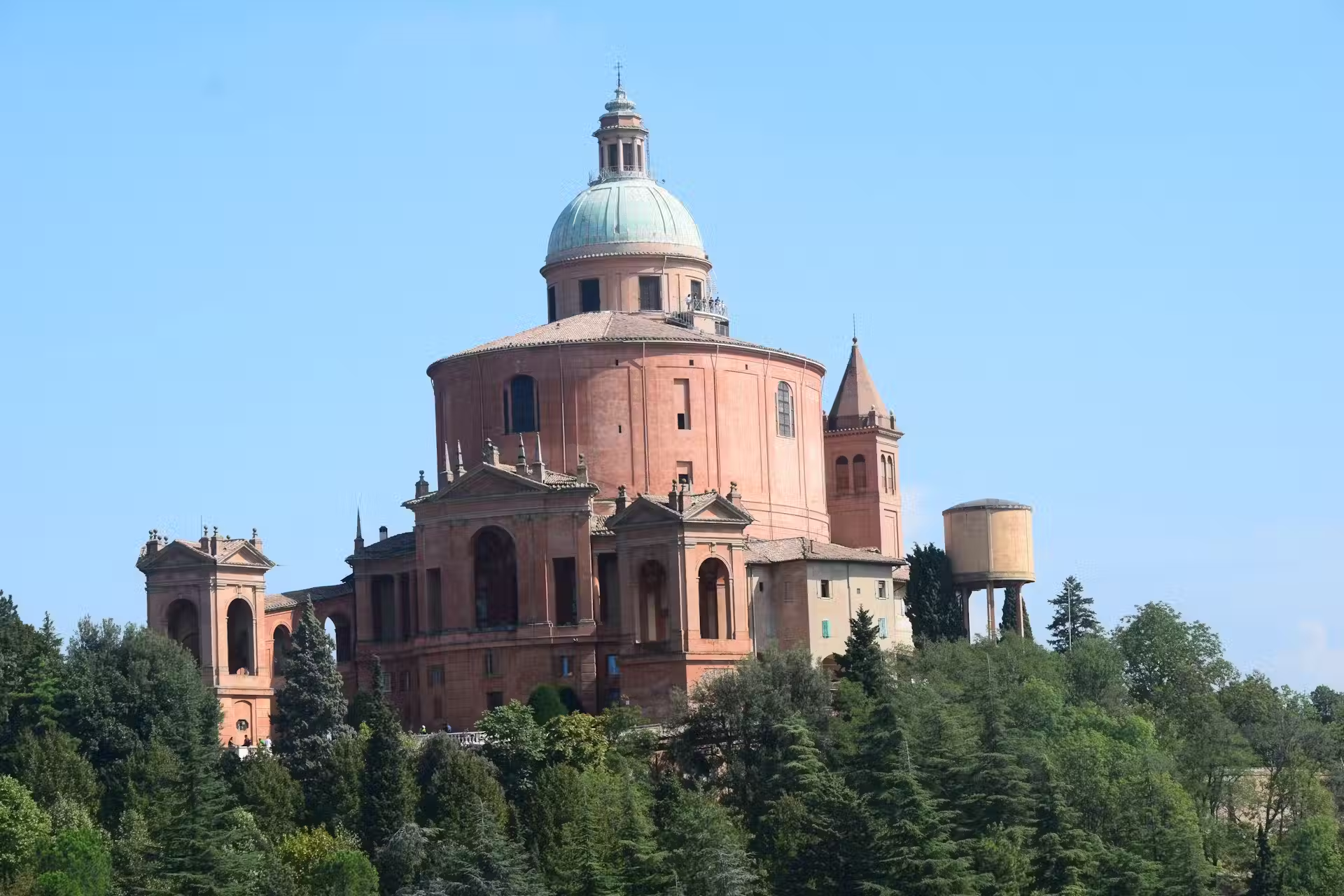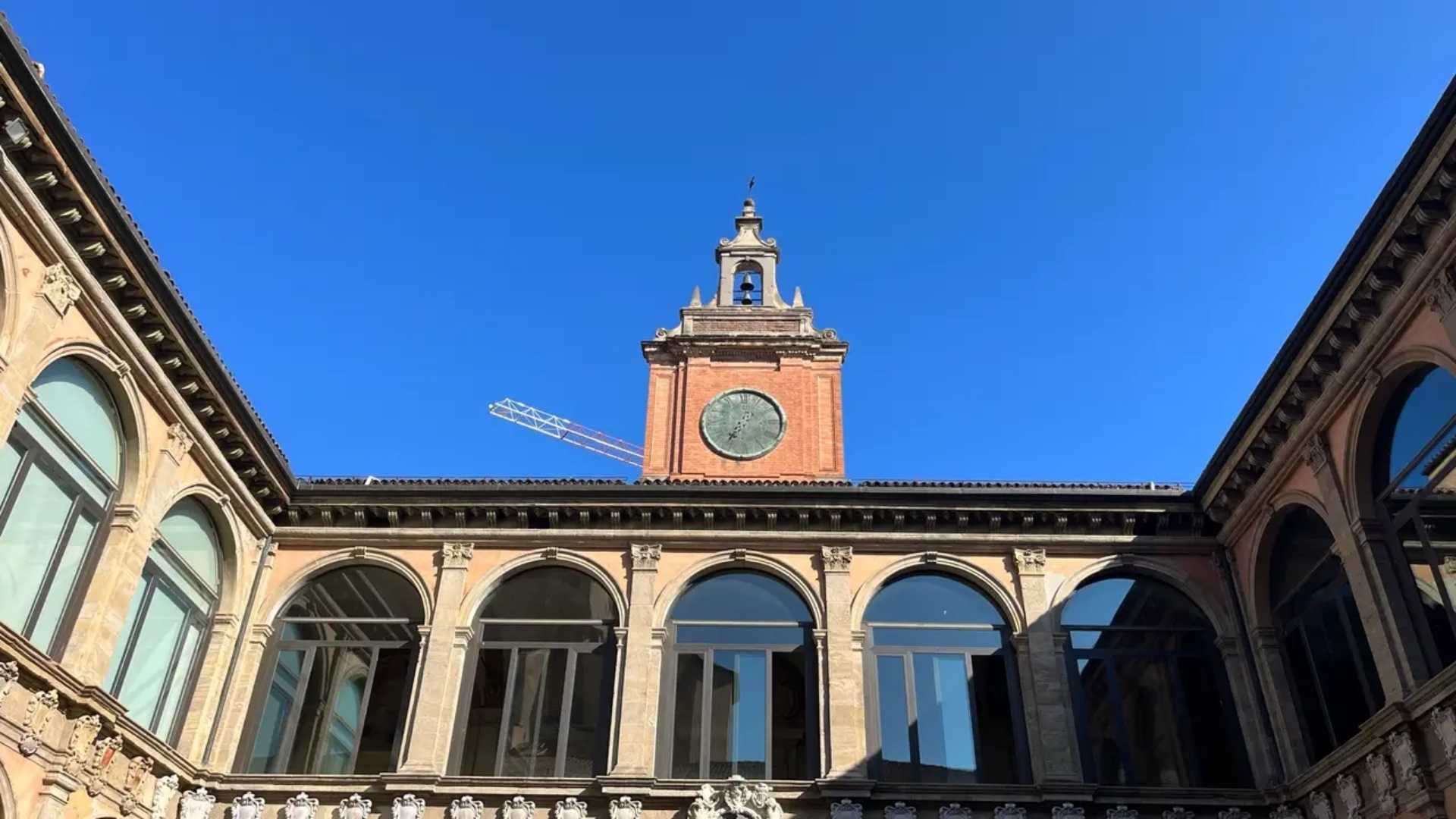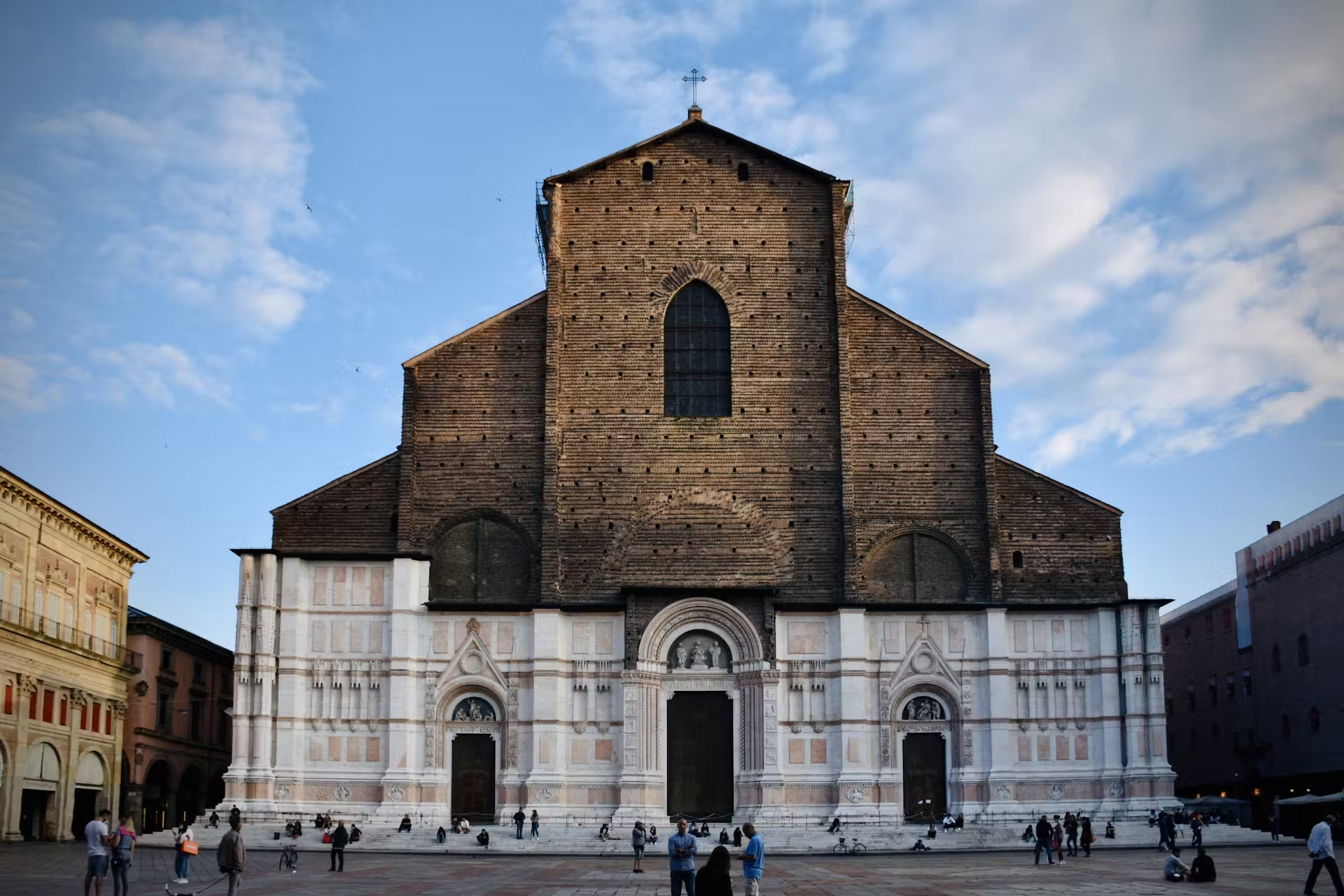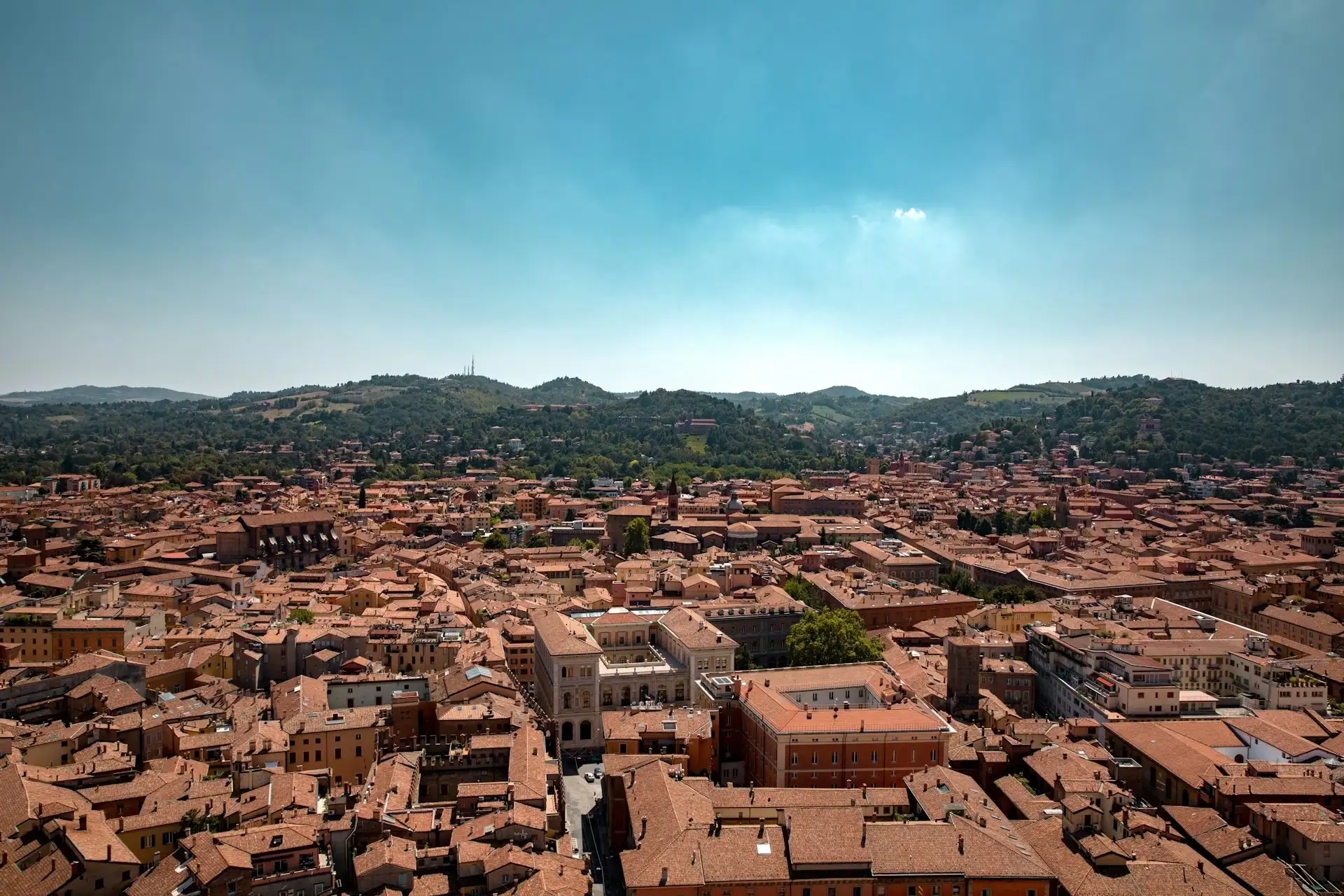TLDR: Piazza del Nettuno is home to Bologna's 16th-century Neptune Fountain by Giambologna. Located next to Piazza Maggiore, it's a quick stop worth seeing for the optical illusion and Renaissance craftsmanship. The fountain represents papal power and takes about 10-15 minutes to appreciate fully. It's photogenic but can feel crowded and touristy, especially in summer. Worth a visit if you're exploring Bologna's historic center anyway.
The first time I saw Piazza del Nettuno, I'll admit I almost walked right past it. Bologna's Neptune Fountain gets hyped as a must-see, but it's smaller than you'd expect and constantly surrounded by tourists taking selfies.
That said, once I learned about the optical illusions and hidden details, I spent way more time there than planned. After several visits to Bologna, I've figured out when to go and what actually makes this fountain special beyond the Instagram appeal.
If you want the full context and stories while you explore, StoryHunt's Personal Tour Guide can provide audio narration tailored to your interests as you walk.
What is the story behind Piazza del Nettuno?
.jpg)
Piazza del Nettuno was created in the 1560s as part of Pope Pius IV's plan to redesign Bologna's city center. The square needed a statement piece to show papal authority, so Cardinal Carlo Borromeo commissioned the Neptune Fountain.
Flemish sculptor Giambologna won the job and created the bronze Neptune statue with marble base by Tommaso Laureti. The fountain took three years to complete and immediately became Bologna's symbol. It's been restored several times, most recently in 2016-2017.
The square connects directly to Piazza Maggiore, making it Bologna's social and political heart for over 450 years. The Personal Tour Guide feature can walk you through these historical layers with audio commentary as you explore the surrounding architecture.
Why is there a statue of Neptune in Bologna?
Neptune was chosen as a power move by the Catholic Church. In 1563, Cardinal Carlo Borromeo wanted to show who controlled Bologna after years of political tension.
Neptune, god of water, made sense symbolically since Bologna had an advanced water distribution system. Giambologna designed the statue to be impressive and intimidating, standing nearly 10 feet tall on its pedestal. The craftsmanship is genuinely remarkable if you look closely at the details.
However, the fountain feels more like propaganda art than organic city culture. Neptune's stern expression changes with the light, which is interesting but not groundbreaking.
Why is Piazza Maggiore famous?
Piazza Maggiore connects directly to Piazza del Nettuno and is famous for its medieval architecture and unfinished Basilica of San Petronio. The square dates to the 13th century and served as Bologna's political center. Historic palazzos frame the space, creating an imposing rather than charming atmosphere.
What makes it genuinely special is how locals still use it for protests, outdoor cinema, and evening hangouts with wine bottles. That living quality sets it apart from more tourist-dominated Italian squares. The architecture is impressive but not particularly beautiful. It's significant for history buffs but might disappoint if you're expecting Florence-level aesthetics.
What are the 7 secrets of Bologna?
Bologna's "seven secrets" is marketing more than historical fact, with different sources listing different secrets.
The most famous is Neptune's optical illusion where his thumb appears to be his penis from a specific angle behind the fountain. Giambologna allegedly did this to bypass church censorship. Look for the stone marker and you'll find it easily since tourists crowd that spot constantly.
Other "secrets" include whispering walls in Palazzo del Podestà, three arrows in wooden beams, and hidden canal views from Via Piella. They're mildly interesting quirks rather than mind-blowing discoveries, but the Neptune trick is genuinely clever Renaissance humor.
Where is the real fountain of Neptune?
This is the original Fountain of Neptune, right here in Piazza del Nettuno since 1567. Some confusion exists because other Italian cities have Neptune fountains, but Bologna's Giambologna design came first. The 2016-2017 restoration removed centuries of grime and revealed the original bronze coloring, which improved it significantly.
The fountain sits at Via Rizzoli and Via dell'Indipendenza intersection, so you'll pass it naturally while exploring Bologna's center. No admission fee or barriers, which means constant crowds and people climbing on it despite cameras everywhere.
Visit early morning for photos without tourists photobombing your shots.
What should I know before visiting?
Piazza del Nettuno is free and always accessible, but timing matters significantly. Early morning before 9 AM offers decent photos without crowds. Late afternoon brings locals but also peak tourist congestion.
Summer months are borderline miserable with heat and masses of tour groups. Shoulder season provides better conditions. The uneven stone ground requires proper shoes. Surrounding cafes charge tourist prices for mediocre food and service.
If you're planning a deeper exploration of Bologna's historic center, StoryHunt's Personal Tour Guide can create a custom audio walk that includes Piazza del Nettuno along with better food spots and less crowded attractions nearby.
What else should I see nearby?
Basilica of San Petronio on Piazza Maggiore has an interesting unfinished facade but requires admission for the full interior. The Archiginnasio houses a beautiful library and Teatro Anatomico worth seeing if you appreciate medical history.
Sanctuary of San Luca involves a long uphill walk under porticoes with good views if weather cooperates. Santo Stefano complex offers a peaceful courtyard away from main tourist traffic.
Bologna's covered porticoes make wandering practical in any weather. Honestly, the city rewards random exploration more than checklist tourism. Using The Personal Tour Guide helps connect these attractions into a logical walking route with stories and context for each stop.
Is it worth seeing Piazza del Nettuno?

Yes, if you're already exploring Bologna's historic center. The Neptune Fountain is worth 10-15 minutes for the Renaissance craftsmanship and the optical illusion trick. It's not worth a special trip or going significantly out of your way.
The fountain photographs better than it impresses in person, partly because crowds diminish the experience. If you appreciate art history and clever Renaissance humor, you'll find value here. If you're just checking boxes on a tourist list, you might feel underwhelmed.
The real value comes from understanding the context, which is where The Personal Tour Guide becomes useful by connecting Piazza del Nettuno with nearby attractions into a meaningful route through Bologna's center.
How can I explore Bologna more deeply?
Piazza del Nettuno works best as part of a broader Bologna exploration rather than a standalone destination. The fountain's historical significance and Renaissance craftsmanship deserve context from the surrounding architecture and cultural sites.
StoryHunt's Personal Tour Guide creates customized audio walks based on your specific interests, whether that's art history, food culture, or hidden architectural details. You can explore at your own pace, pause for meals or photos, and discover Bologna beyond the obvious tourist checklist.

.webp)








.jpg)
.avif)





